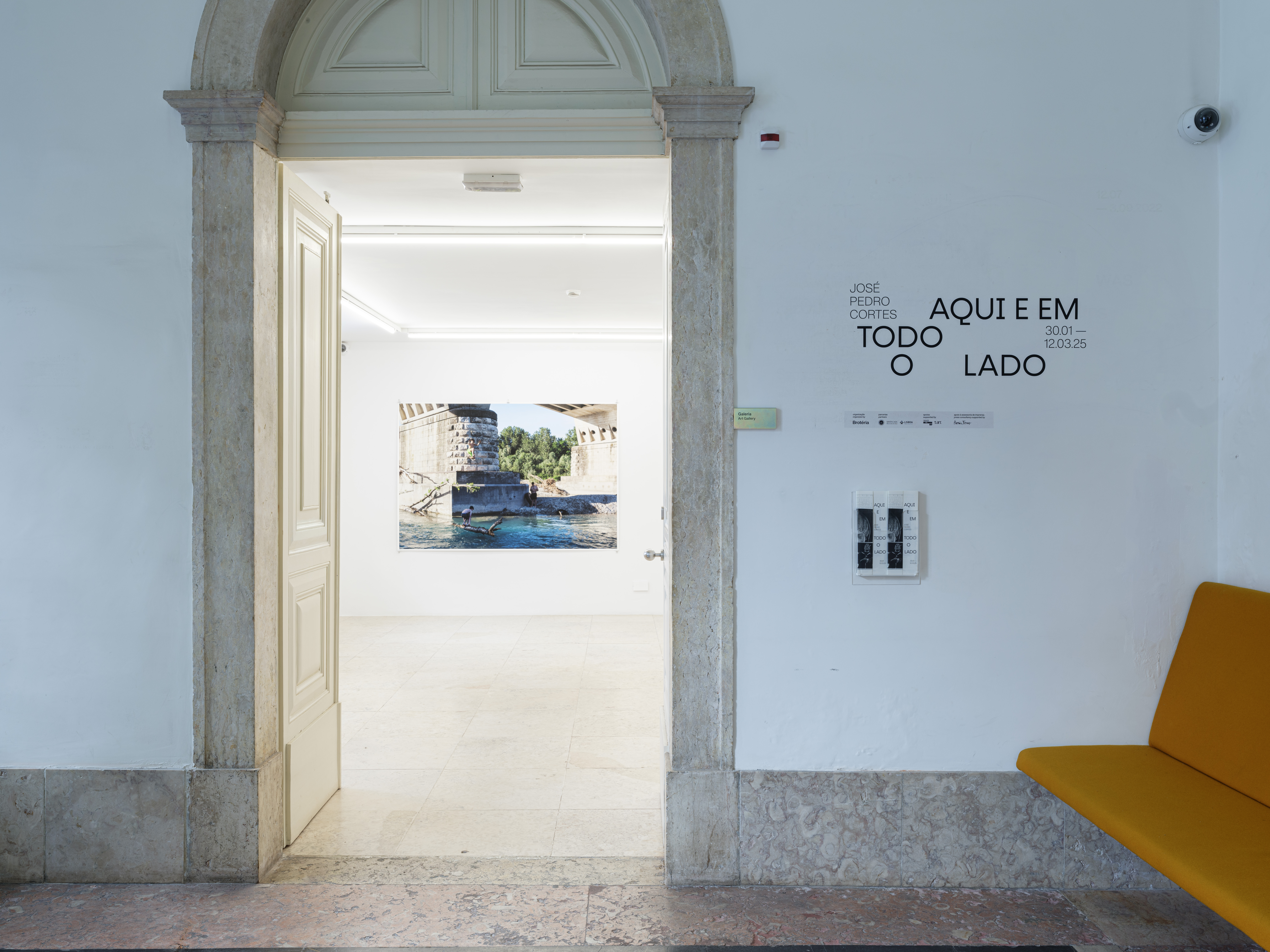Aqui e em Todo o Lado
Brotéria, Lisboa
30 January - 12 March 2025














José Pedro Cortes’ body of work stems from an ever-present interest in observing the world around him. His images, whether constructed or captured out of instinct, are subjective and political and follow a realist tradition that deems everyday life’s material and pictorial potential as a mirror of the contemporary world.
In Aqui e em todo o lado, Cortes shows us a set of images which reflect on a time of uncertainty and change. The human body and its relationship with nature, namely with water, is a recurring theme in this exhibition. Its ideas of immersion and suspension convey a sense of seduction but also of anxiety. In one of these photographs, Cortes shows us an image of a neophyte (a person who has been recently baptized). A statue of a male figure undressing, his face covered by his arms while removing his clothes, already partly uncovered. The gesture represents a transition between two states, making visible that which exists between before and after. In a way, he is demanding our attention so that we may witness the dive he is about to surrender to. It is therefore important to define the experience of submersion, to reflect on the places of impermanence and to recognize the physical and psychological tension to which this body “in transition” will be exposed. This movementof absolute rendition, and a contemplative one,has nothing passive about it and counteracts the potential involuntary superficiality of one’s life. It is amovement that reveals how we perceive the world. On this matter, Robert Walser wrote that «we don’tneed to see anything out of the ordinary. We already see so much.» (A Little Ramble, 1914).
Aqui e em todo o lado is woven under a carefuland sensitive gaze on the human experience. It tears the membrane of banality that covers all things – characters, gestures and everything else.It fabricates a day-to-day experience so as to elevate these things and grant them the nature and importance of rituals. Each photograph is like an“in-between place”, a liminal space, which demands our silence and slowness to reveal itself. Although autonomous in themselves, these images are, as a whole, a metaphor for the movement between the visible and the invisible.